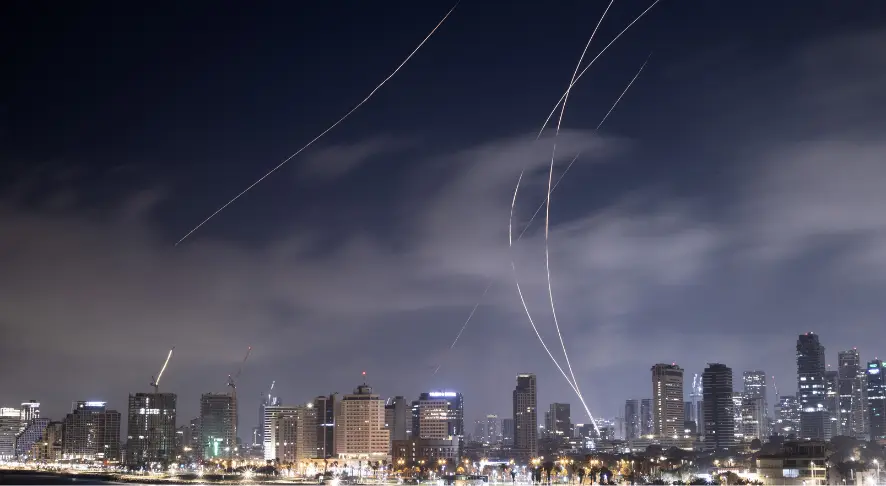How Iran Breached Israel’s Air Defense System: Strategy, Impact & Global Implications
In June 2025, global headlines were dominated by a high-stakes military confrontation in the Middle East: Iran successfully breached Israel’s highly sophisticated air-defense network—a feat once thought nearly impossible. While Israel has long been hailed for its layered defense systems like Iron Dome, David’s Sling, and Arrow 3, recent events revealed key vulnerabilities.
This blog explores how Iran pierced Israel’s air defense, the technologies used, the tactics applied, and what this implies for future warfare and geopolitical stability.
1. Coordinated Drone and Missile Swarm Strategy
At the core of Iran’s successful breach was a coordinated saturation attack involving:
-
Over 400 ballistic missiles
-
More than 300 drones
Launched simultaneously from multiple sites, this massive volume of airborne threats tested Israel's multi-tiered defense system to its limits. The Iron Dome is designed to counter short-range threats, David’s Sling for medium-range, and Arrow 3 for high-altitude and long-range missiles.
However, volume overwhelmed precision. The simultaneous arrival of threats from multiple altitudes and directions made it difficult for radar and interceptor systems to track, prioritize, and neutralize each object effectively.
2. Exploiting Radar and Range Gaps
Iran also strategically deployed low-flying drones that hugged terrain contours and hypersonic ballistic missiles that traveled at speeds exceeding Mach 5. This dual-speed approach exposed limitations in radar tracking and interception timing.
Radar systems rely on line-of-sight. Drones flying at very low altitudes under radar coverage can bypass detection. At the same time, hypersonic missiles reduce response time, making it difficult for defense systems to lock on and intercept.
This two-pronged approach—low and slow vs. high and fast—outmaneuvered Israel’s standard engagement protocols.
3. Saturation and Cost-Based Warfare
Another major factor was economic: Israel’s missile defense is extremely expensive to operate.
-
Each Iron Dome interceptor costs between $40,000 to $100,000.
-
Arrow 3 interceptors cost millions per unit.
With Iran launching hundreds of relatively cheap missiles and drones, it forced Israel into a dilemma—spend heavily to intercept each threat or risk taking damage. Some reports suggest that Israel burned through $285 million worth of interceptors in a single night, raising sustainability concerns.
This asymmetric cost dynamic tilted the balance temporarily in Iran’s favor.
4. Strikes on Strategic Targets
Despite intercepting the vast majority of incoming threats (estimated 90–95%), a handful of missiles and drones hit their targets, including:
-
Air bases like Nevatim and Tel Nof
-
Military communication hubs
-
Civilian areas, such as a bus terminal in Herzliya
These successful strikes demonstrated that no system is invincible, especially when overwhelmed with coordinated multi-domain threats.
5. The Role of Cyber and Psychological Warfare
Iran’s strategy went beyond hardware. Cyber interference may have targeted Israeli communications or radars, although details remain classified. In parallel, psychological impact was significant.
The breach shook public confidence in the Iron Dome—once a symbol of invincibility. It showcased how even the most technologically advanced nations can be vulnerable under the right strategic pressure.
6. Israeli Countermeasures and Global Implications
Following the attack, Israel ramped up defense cooperation with allies like the United States, UK, and Jordan. American Patriot batteries and THAAD systems were redeployed to reinforce Israeli defense layers. Naval corvettes armed with Barak missile systems were also positioned to defend maritime zones.
Mossad operations in the lead-up to the attack reportedly targeted over 800 Iranian launchers and air-defense installations, delaying even greater damage.
From a global standpoint, this confrontation redefines modern warfare:
-
Drones and hypersonics are no longer future tech—they are now battlefield realities.
-
Defense systems must evolve to be faster, cheaper, and more automated.
-
Geopolitical alliances and preemptive intelligence play a larger role than ever.
Conclusion: A New Chapter in Air-Defense Warfare
The fact that Iran pierced Israel’s air defense is not merely a tactical success—it’s a strategic shift in how warfare is conducted. The blend of quantity over quality, low-cost saturation, and dual-speed threats created a scenario where even the most advanced systems couldn’t fully cope.
While Israel retains its military edge, this incident serves as a wake-up call for all nations. Future conflicts will be won not just through superior weaponry, but through agile tactics, hybrid strategies, and global coordination.
As the dust settles, one thing is clear: the age of perfect defense is over. The future belongs to those who can adapt fastest—on the ground, in the air, and across cyberspace.









